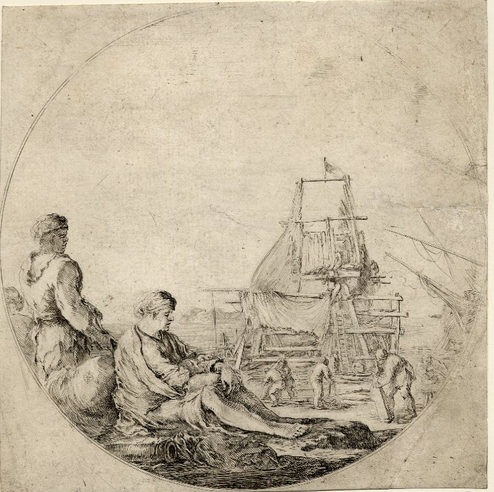Pieces of Eight: Sailors, Wages, and Trade
by Richard Blakemore (University of Reading) – research conducted at the University of Exeter thanks to a ERC project.
In April 1642, Michael Johnson sailed from London aboard the Fame. The voyage took him to northern France, southern Spain, and the Caribbean, and Johnson started it with a ‘venture’, a personal investment of cash or goods, worth £5. He spent the voyage ‘turneinge and winding’ (as one of his shipmates put it) his venture and his wages: hiring out his cabin to passengers, buying and selling at each port. By the time the ship was heading for home, Johnson had accumulated 200 pieces of eight and some cargo, altogether worth roughly £50 – ten times his original ‘venture’.

This example invites us to reconsider the traditional image of mariners as wage workers, as poor and unskilled labourers, sitting at the bottom of a strictly ranked workforce. That is what this article is set to do.
This idea of mariners has endured among historians in part because it was popular among those mariners’ contemporaries, especially during the early modern period when global trade and shipping expanded enormously. A proverb from that period claims that ‘the sea and the gallows refuseth nobody’. Yet this interpretation has also been founded on a relatively limited analysis of sailors’ wages, which sought mainly to identify averages across the sector. This article presents a more detailed discussion of this topic, based on a dataset gathered from the papers of the High Court of Admiralty. It is possible to download the dataset here.
The data confirms the impression of a hierarchical labour market, with clear thresholds between ranks. Most mariners (sailors with no specific role) earned less than most specialists (men with a specific job, like boatswain, gunner, or carpenter); most specialists earned less than masters and master’s mates, who navigated and commanded ships. However, there was also remarkable variety – across the seventeenth century, mariners earned between 5 and 55 shillings a month, specialists between 13 and 100 shillings, though in both cases there was predictable lumping around a median point.
Such variation can be explained by the circumstances of a voyage, such as length, destination, and anticipated riskiness. In wartime, for instance, wages rose for most seafarers. This also reflects different levels of skill and social capital for individual sailors at all levels of the shipping industry. In other words, we must recognise that at least some mariners, as well as those at higher ranks, were experienced workers who could claim a skill premium in their wages.
As well as exploring this variety in wages, we also need to look beyond them to other forms of income – something which, like wages, scholars have often treated briefly, and with more attention to the activities of shipmasters. There were multiple available arrangements. Sailors might receive a share of the profits from a voyage, especially when working on a fishing vessel or a privateer, and they also expected a full ‘diet’ aboard ship, and protested loudly when the food did not meet their expectations.
Most crucially, it seems that Michael Johnson was not alone. Many sailors of all ranks carried goods aboard ship, sometimes in their own cabin or chest, sometimes in larger volumes with the ship’s other cargo. This is an area that historians have begun to investigate in more depth (as in this article by Beverly Lemire, and this roundtable edited by Maria Fusaro). Though there is not enough evidence on the value of these goods for a systematic analysis, we can at least establish that the practice was ubiquitous, and that it formed a significant portion of many seafarers’ incomes.
There are implications from this evidence for our wider understanding of the shipping industry and early modern economic developments. As well as the idea that they were unskilled, sailors have often been seen as an exploited group, essential to but not benefitting from European economic growth, to which shipping and trade were dynamic contributing sectors. There is some truth to this picture: sailors’ working lives were certainly hard and dangerous, and the period saw rising inequality, with wages falling behind inflation. Nevertheless, studying seafarers’ wages and trade shows us that they sought to make the best of, and some of them were able to successfully operate in, the venture economy of early modern shipping.
Full article: Blakemore, R. J. (2017), Pieces of eight, pieces of eight: seamen’s earnings and the venture economy of early modern seafaring. The Economic History Review, 70: 1153–1184. doi:10.1111/ehr.12428. Available here
To contact the author: r.blakemore@reading.ac.uk

